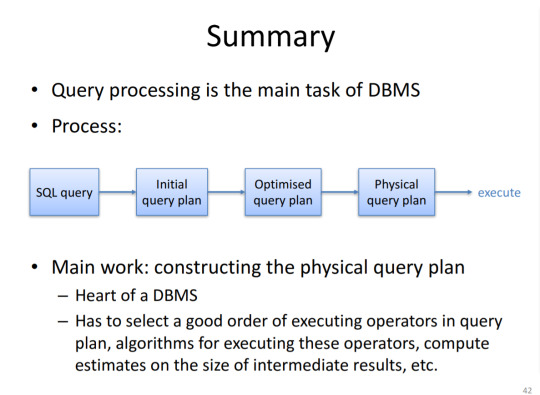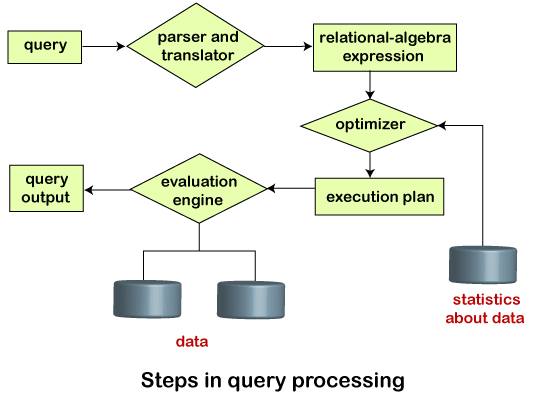#aggregation in dbms tutorialspoint
Explore tagged Tumblr posts
Text
DBMS in Hindi - Aggregation
DBMS in Hindi – Aggregation
aggregation in dbms, aggregation kya hai, DBMS Aggregation in Hindi
DBMS Aggregation in Hindi
एकत्रीकरण (aggregation) में, दो entities के बीच संबंध को एक entity के रूप में माना जाता है। एकत्रीकरण में, इसकी संबंधित entities के साथ संबंध एक higher level इकाई में एकत्रित होता है।
उदाहरण के लिए:यदि कोई visitor किसी कोचिंग सेंटर में जाता है, तो वह कभी भी कोर्स के बारे में या सिर्फ सेंटर के बारे में…
View On WordPress
#aggregation function in dbms#aggregation in dbms#aggregation in dbms in hindi#aggregation in dbms pdf#aggregation in dbms tutorialspoint#aggregation in dbms wikipedia#association in dbms#cardinality ratio in dbms#categorization in dbms#difference between specialization and generalization in dbms#difference between specialization and generalization in dbms in hindi#er diagram in dbms#generalization and specialization in software engineering#generalization in dbms in hindi#generalization in javatpoint#generalization kya hai#generalization or specialization pdf#generalization tutorialspoint#how specialization is different from generalization#specialization in dbms#translating er diagrams with aggregation#what is generalization in hindi#what is the opposite of a generalization relation in a concept hierarchy
0 notes
Text
Query Processing In Dbms

Query Processing and Optimization CS1655, Alexandros Labrinidis- University of Pittsburgh! Structure of a DBMS Web Forms SQL Interface Application Front Ends Query Evaluation Engine Files and Access Methods Disk Space Manager Buffer Manager Concurrency Control Recovery Data Manager Files System Catalog Index Files Applications DBMS Database. Query Processing would mean the entire process or activity which involves query translation into low level instructions, query optimization to save resources, cost estimation or evaluation of query, and extraction of data from the database. In an (object) relational database management system (DBMS) query processing comprises all steps of processing a user submitted query including its execution to compute the requested result. Usually, a user query – for example a SQL query – declaratively describes what should be computed. Then, it is the responsibility of the DBMS to.
Query Processing In Dbms Mcq
Query Processing Steps In Dbms
Query Processing In Dbms Examples
Query Processing In Dbms In Hindi
Query Processing In Dbms
Query Processing In Dbms Tutorialspoint
Query Processing In Dbms
8i | 9i | 10g | 11g | 12c | 13c | 18c | 19c | 21c | Misc | PL/SQL | SQL | RAC | WebLogic | Linux
Home » Articles » 12c » Here
The APPROX_COUNT_DISTINCT function was added, but not documented, in Oracle 11g to improve the speed of calculating the number of distinct values (NDV) when gathering statistics using the DBMS_STATS package. Oracle Database 12c Release 1 (12.1) documented it for the first time, making it a supported feature. Oracle Database 12c Release 2 (12.2) extends the concept of approximate query processing by the addition of new functions and transparent conversion to approximate query processing.
Related articles.
Approximate Functions
In Oracle Database 12c Release 2 (12.2) the following functions provide approximate results.
The documentation states they 'obtain approximate results with negligible deviation from the exact result'. If you are writing a new query or refactoring an existing query and approximate results are acceptable, you can use them explicitly.
Convert Exact to Approximate
Having the new approximate query processing is great, but what do you do about all the existing code you have that uses the original calls? You could refactor your code, or you could ask Oracle to convert your exact calls to approximate calls instead.
Oracle Database 12c Release 2 (12.2) includes three new parameters that control approximate query processing, which can be set at the system or session level.
APPROX_FOR_AGGREGATION : Setting this to TRUE is the equivalent of setting APPROX_FOR_COUNT_DISTINCT to TRUE and APPROX_FOR_PERCENTILE to ALL.
APPROX_FOR_COUNT_DISTINCT : Setting this to TRUE converts COUNT(DISTINCT ...) calls to APPROX_COUNT_DISTINCT calls.
APPROX_FOR_PERCENTILE : This can be set to NONEPERCENTILE_CONT, PERCENTILE_CONT DETERMINISTIC, PERCENTILE_DISC, PERCENTILE_DISC DETERMINISTIC, ALL, ALL DETERMINISTIC.
We can do a simple test to prove to ourselves this works. Remember, estimated execution plans are not always representative of the actual plans used by a query.
Build a large table.
Turn on the approximate query processing and get the estimated execution plan for a regular COUNT(DISTINCT ...) query.
We can see from the output the estimated plan includes a SORT AGGREGATE APPROX operation.

Create a new session and run the same test without enabling the approximate query processing.
Query Processing In Dbms Mcq
We can see from the output below the estimated execution plan no longer contains the approximate query processing.
Here are some examples of setting the parameters at the session and system level.
Query Processing Steps In Dbms
Query Transformation
If you want to see the associated query transformation you can perform a 10053 trace and look at the resulting trace file. As an example, run the following.
Open the trace file displayed by the v$DIAG_INFO query and search for the term 'Final query after transformations'. You will see something like this.
Approximate Query Processing and Materialized Views
You can use approximate query processing functions in materialized views, which can subsequently be used for query rewrites.
Create a materialized view based on the test table we used in the previous section, using a query containing the APPROX_COUNT_DISTINCT function.
We check the approximate query processing and query rewrite parameters for the session, then check the estimated execution plan for a query against the base table using the APPROX_COUNT_DISTINCT function.
We can see a query rewrite was done to use the materialized view.
Let's see what happens if we use a conventional COUNT(DISTINCT ...) query against the base table.
Query Processing In Dbms Examples
We can see the estimated execution plan used the base table, rather than performing a rewrite to use the materialized view.
This time we will enable approximate query processing and try again.
We can see the estimated execution plan used the materialized view, rather than the base table.
There are some restrictions associated with fast refreshes of materialized views containing approximate query processing functions listed here.
Query Processing In Dbms In Hindi
For more information see:
Hope this helps. Regards Tim...
Trending Categories
Selected Reading
Query Processing In Dbms
DBMSDatabaseBig Data Analytics
The activities involved in parsing, validating, execution and optimizing a query is called Query Processing.


Steps
The steps involved in query processing and optimization are as follows −
Query Processing In Dbms Tutorialspoint
A sequence of primitive operations that can be used to evaluate a query is called query execution plan or query evaluation plan.
The query execution engine takes a query evaluation plan, executes that plan and produces the desired output. The different execution plans for a given query can have different costs based on the number of disks. It is the responsibility of the system to construct a query evaluation plan which minimizes the cost of query evaluation. This task is called query optimization.
A query optimization is expressed in high level query language and is scanned, parsed and validated. The scanner identifies the SQL keywords, attributes and relation names in the text of the query.
The parser checks the syntax which is used to determine if the query is formulated according to syntax rules of the query language.
Finally, the query is evaluated by checking that all attributes and relation names are valid and semantically meaningful in the schema of a particular database.
An internal representation of the query is then created which is either a tree or a graph known as query tree or query graph.
If the query written SQL is translated into relational algebra, then its internal representation is a query tree. Otherwise, if TRC or DRC its internal representation is a query graph. A graph has many possible execution strategies and the process of choosing a strategy with minimum cost is called query optimization.
Query Processing In Dbms
The query processing and optimization in the DBMS are explained in the form of a diagram below −
Related Questions & Answers

0 notes
Text
DBMS in Hindi - Specialization
DBMS in Hindi – Specialization
specialization in dbms, specialization kya hai, dbms specialization in hindi
DBMS Specialization in Hindi
specialization एक top-down दृष्टिकोण है, और यह generalization के विपरीत है। specialization में, एक higher level की इकाई को दो lower level की entities में तोड़ा जा सकता है।
specialization का उपयोग एक इकाई set के subset की पहचान करने के लिए किया जाता है जो कुछ विशिष्ठ विशेषताओ को साझा करता है।
View On WordPress
#aggregation in dbms pdf#aggregation in dbms tutorialspoint#association in dbms#difference between specialization and generalization in dbms in hindi#generalization and specialization in software engineering#generalization in dbms in hindi#generalization in javatpoint#generalization kya hai#generalization or specialization pdf#generalization tutorialspoint#how specialization is different from generalization#specialization in dbms#what is generalization in hindi#what is the opposite of a generalization relation in a concept hierarchy
0 notes
Text
DBMS in Hindi - Generalization
DBMS in Hindi – Generalization
Generalization in hindi, generalization kya hoti hai, dbms generalization in hindi, generalization kya hai,
DBMS Generalization in Hindi
generalization एक bottom-up approach की तरह है जिसमें lower level की दो या दो से अधिक इकाइयां higher level की इकाई बनाने के लिए combine होती हैं यदि उनमें कुछ सामान्य विशेषताएँ हैं।
generalization में, higher level की एक इकाई भी lower level की entities के साथ…
View On WordPress
#aggregation in dbms pdf#aggregation in dbms tutorialspoint#association in dbms#difference between specialization and generalization in dbms in hindi#generalization in dbms in hindi#generalization in javatpoint#generalization kya hai#generalization or specialization pdf#generalization tutorialspoint#how specialization is different from generalization#what is generalization in hindi#what is the opposite of a generalization relation in a concept hierarchy
0 notes